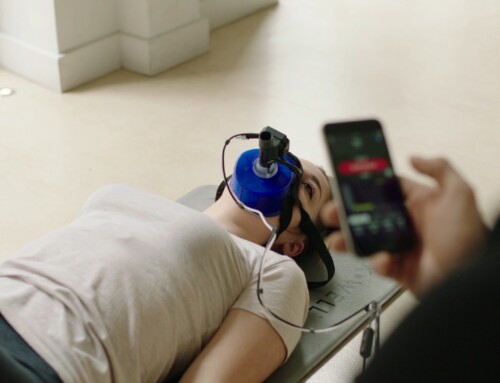Author: Liz Jones
We live in the age of healthy living. Kale has possibly taken the place of a cheeseburger as the most popular “American” food, at least in Portland. Your own popularity may be determined by how many pairs of yoga pants you own. For many, it has become a goal to make every aspect of our lives as healthy as possible. Even the office is making moves toward healthier living. The standing workstation is making its way into workplaces all around the globe. These ergonomic desks offer the option of sitting or standing, rather than being chained to a chair all day.
But what are the actual benefits of a standing workstation?
One great thing about cultural obsessions is that soon after they become publicly recognized, and often before, people conduct research studies to test the theories. In this Evolution blog we will examine some of these tests and studies to explain the physical and mental benefits of standing workstations.
Mortality
The amount of sitting in a day, whether it be watching TV, or working at a desk, is directly related to mortality, especially mortality related to cardiovascular disease. In a study published by the American Journal of Epidemiology researchers examined the relation of time spent sitting to death rate. They considered multiple variables, including the amount of physical activity, smoking habits, education level, caloric intake, and BMI. The results were expected, but still shocking to see. Those who were more sedentary during the day, regardless of the factors listed previously, had a high correlation of death associated with cardiovascular disease. The study encourages those who sit for most of the day to increase the amount of standing and walking they do to reduce the risk of cardiovascular disease and death.
Productivity
What if you aren’t concerned with cardiovascular disease? Perhaps you are in great shape, but just happen to have a 9 to 5 desk job during the week. Standing workstations are still relevant. It turns out that standing directly affects the productivity and energy in the work place. A team at Draugiem Group, in Latvia, created an app to track their employees’ productivity when they were sitting and when they were standing. The employees logged their position (sitting or standing), and worked as they normally would. At the end of the test the app determined that employees were 10% more productive when standing. Granted this is not a formal experiment, however if it worked for them, it will likely work for other companies. Even larger companies, including Facebook, Google and AOL, are offering standing workstations to their employees.
Emotional and Physical Comfort
The Centers for Disease Control and Prevention conducted a study using standing workstations and measuring mood states and comfort. If you have worked at a desk for any length of time, you probably experienced discomfort in your neck and back. Chairs promote slouching, which puts a lot of pressure on your spine and results in the back and neck pain that so many people endure. In the study, known as “The Stand Up Project”, there was a significant reduction in upper back and neck pain in the standing group compared to the sitting group. The “Results indicated that 87% felt more comfortable, 87% felt energized, 75% felt healthier, 71% felt more focused, 66% felt more productive, 62% felt happier, and 33% felt less stressed as a result of having the sit-stand device installed at their work stations,” (Pronk et al, pg. 4). A different study on leisure time spent sitting found that men and women who spent in a sedentary state “were leaner, more likely to have never smoked cigarettes, more likely to be employed, and had lower energy total intake” (Patel et al, pg. 421).
Your Options
If you don’t already have standing workstations at your office, it is certainly a reasonable request. Plenty of research has proven it an effective tool in making the workplace more comfortable and productive for employees.
Local company, Anthro, in Tualatin has a wide range of options for standing desks. Anyone at Evolution Healthcare and Fitness can attest to their quality, as our office is stocked full of them! Relax the Back in Bridgeport also has standing workstation options. Types of workstations range from a simple table style, to a rolling cart, to multi-surface desks that hold multiple monitors. Some desks can be quite pricey, but it is not only an investment in your work environment, it’s an investment in your body and health. There’s only one of you, and you’re worth taking care of.
SOURCES
Gifford, Julia. “We Tested Standing Desks – Here’s Proof They Make You More Productive.” Readwrite. N.p., 26 Sept. 2013. 27 Apr. 2015.
Patel, Apla V., Leslie Bernstein, Ansusila Deka, Heather Spencer Feigelson, Peter T. Campbell, Susan M. Gaptstur, Graham A. Colditz, and Michael J. Thun. “Leisure Time Spent Sitting in Relation to Total Mortalilty in a Prospective Cohort of US Adults.” American Journal of Epidemiology 172.4 (2010): 419-29.
Pronk, Nicolaas P., Abigail S. Katz, Marcia Lowry, and Jane Rodmyre Payfer. “Reducing Occupational Sitting Time and Improving Worker Health: The Take-a-Stand Project, 2011.” Preventing Chronic Disease: Public Health Research, Practice, and Policy 9 (2012): 1-9. Centers for Disease Control and Prevention.
Van Der Ploeg, Hidde, Tien Chey, Rosemary J. Korda, Emily Banks, and Adrian Bauman. “Sitting Time and All-Cause Mortality Risk in Australian Adults.” Archives of Internal Medicine 172.6 (2012): 494-500. JAMA Network.



